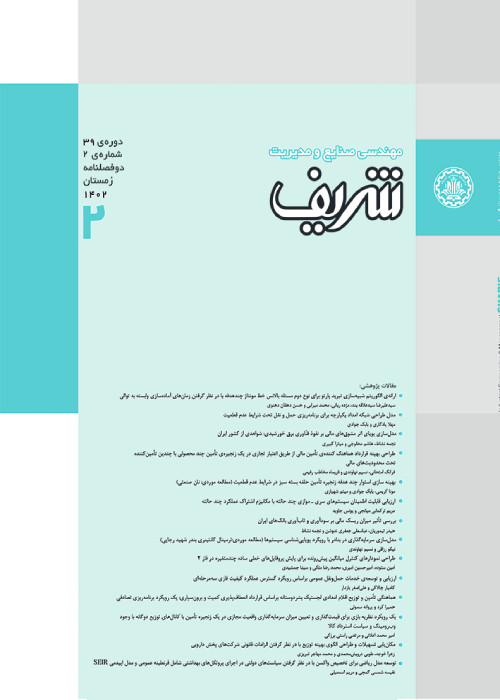MODELING AND SOLVING A THREE-ECHELON SUPPLY CHAIN PROBLEM USING STATISTICAL HYPOTHESIS TEST AND TOPSIS AND SAW METHODS
IntraditionalSupplychainmanagement,thefocusofthe integrationofsupplychainnetworkisusuallyonasingle objective, i.e., minimum cost or maximum pro t. However, the modelling of a supply chain requires more than asingleobjectivesuchaslead-timeminimization,service level maximization, and so on. Sometimes, these objectives may cause con icts such as increasing the service level which usually leads to a growth in costs. Therefore, the aim must be to nd trade-o solutions to satisfy the con icting objectives. In multi-objective optimization problems, there is no single optimum solution, but there is a solution set which creates Pareto optimal solutions. Pareto optimal solutions are a set of tradeo s between di erent objectives and are non-dominated solutions, i.e., there is no other solution which would improve an objective without causing worsening of at least one of the other objectives "This paper introduces a bi-objective optimization model of a multi-product multi-periodthree-echelonsupplychainnetworkconsisting of manufacturing plants, distribution centers, and customer nodes. the two objectives are minimization of the total cost while maximizing the average safe inventory levels of manufacturing plans and distribution centers. The goal is to determine the quantities of the products produced by the following: the manufactured plants in di erent periods, number and locations of the warehouses, quantities of products transported between the supply chain entities, inventory of products in warehouses and plants, short safe inventory of product in warehouses and plants, and shortage quantity of the customer nodes. The problem is rst formulated into the framework of a constrained bi-objective mixed integer nonlinear programming model. Then, to solve the problem, two multi-objective decision-making (MODM) methods are investigated. Then, the performances of these methods are compared in terms of both the solution quality and CPU time required in an attempt to select the best one. For this purpose, Statistical hypothesis test and TOPSIS methods are used. Finally, using some parameters, a sensitivity analysis has been carried out to test the sensitivit of the proposed model.
- حق عضویت دریافتی صرف حمایت از نشریات عضو و نگهداری، تکمیل و توسعه مگیران میشود.
- پرداخت حق اشتراک و دانلود مقالات اجازه بازنشر آن در سایر رسانههای چاپی و دیجیتال را به کاربر نمیدهد.


